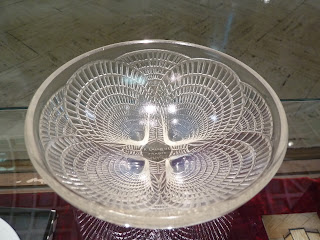I used to think Arthur Dooley was a bad sculptor......that was until I saw this piece that I had to buy and strong it is.
I then wrote up his biography in simple form and in doing so I began to understand him more.
Born in Liverpool in 1929, Dooley worked as a welder on the Ark Royal.
He was working, tirelessly, around Liverpool, right up until his death in 1994. He was a boxer and once came to blows in the Everyman with Arthur Ballard an art teacher who had taught Stewart Sutcliffe.
He created numerous religious figures in polished bronze using unorthodox techniques and unusual interpretations. The Black Christ on Princes Avenue being one, that went down like a lead balloon.
He buttonholed Hesseltine after the Toxteth Riots and pleaded with him “Don’t let them knock down the Albert Dock”.
His first sculpture was made in an army prison in Egypt where he served a sentence for going AWOL. Conflicting reports, one saying he tried to join the PLO.
Upon his unceremonious return from the army, he joined a drawing class at the Whitechapel gallery in London.
He was then employed as a janitor. His job included clearing up after the sculptors and setting up materials, then he began to make his own work...using scraps of metal left over.
His lead cast piece of a crucified Jesus received a good response around the college. From these humble beginnings, in 1962 he exhibited at St Martins Gallery, a stones throw from the college where he had worked. Cast a bronze bull for London weekend’s south bank building. He met the great art critic Greenberg and made several appearances on the "Tonight" programme. I saw an interview he made with Bill Shankly. He dubbed the new Cathedral Paddy’s Wigwam. He was featured on This is Your Life.
When Henry Moore, overworked turned down the Stations of the Cross at the Benedictine Community of Ampleforth Monastery Dooley took up the commission.
Later he would say the shipyard was really my art school.
.JPG)
Deeply concerned about social problems of his day. He was a member of the communist party. He was always an outspoken and immensely religious letting the materials he worked with speak. His workshop 34-36 Seel Street is intact. It needs preserving.
He was a active member of the Liverpool Academy.
He campaigned to have the right for Liverpool artists to show their wares outside the Bluecoat. He is slowly being recognised as an important man active in town planning not afraid to have his say.
Remember Him.
http://en.wikipedia.org/wiki/Arthur_Dooley
http://www.arthurdooley.org/biography.html
http://www.liverpoolmonuments.co.uk/dooley/dooleyarthur.html
His work has been going up at an amazing rate...........it now seems he is trendy something he would have hated I think. It is now not being afforded by the people who deserve his work.
I also think that some of those buying his work driving his prices up are more likely to be investors who would not know a good sculpture from a bad sculpture. It should not be that someone owns a Dooley, but do they have a good one, because there are many not so good ones out there.
His work can be confused with Brian(I am now a native American Indian) Burges and Sean Rice.
If you study his work you can feel his influences.
His pupil Stephen Broadbent has mad a fortune churning out Dooley inspired works to undescerning patrons with more money than sense.





.JPG)



